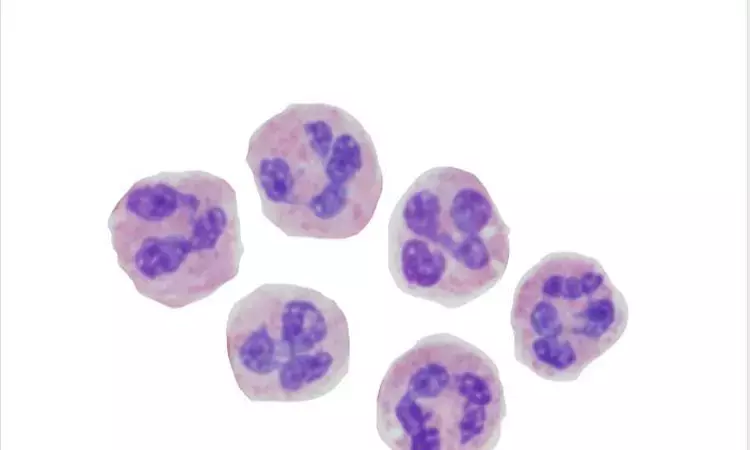- Home
- Medical news & Guidelines
- Anesthesiology
- Cardiology and CTVS
- Critical Care
- Dentistry
- Dermatology
- Diabetes and Endocrinology
- ENT
- Gastroenterology
- Medicine
- Nephrology
- Neurology
- Obstretics-Gynaecology
- Oncology
- Ophthalmology
- Orthopaedics
- Pediatrics-Neonatology
- Psychiatry
- Pulmonology
- Radiology
- Surgery
- Urology
- Laboratory Medicine
- Diet
- Nursing
- Paramedical
- Physiotherapy
- Health news
- Fact Check
- Bone Health Fact Check
- Brain Health Fact Check
- Cancer Related Fact Check
- Child Care Fact Check
- Dental and oral health fact check
- Diabetes and metabolic health fact check
- Diet and Nutrition Fact Check
- Eye and ENT Care Fact Check
- Fitness fact check
- Gut health fact check
- Heart health fact check
- Kidney health fact check
- Medical education fact check
- Men's health fact check
- Respiratory fact check
- Skin and hair care fact check
- Vaccine and Immunization fact check
- Women's health fact check
- AYUSH
- State News
- Andaman and Nicobar Islands
- Andhra Pradesh
- Arunachal Pradesh
- Assam
- Bihar
- Chandigarh
- Chattisgarh
- Dadra and Nagar Haveli
- Daman and Diu
- Delhi
- Goa
- Gujarat
- Haryana
- Himachal Pradesh
- Jammu & Kashmir
- Jharkhand
- Karnataka
- Kerala
- Ladakh
- Lakshadweep
- Madhya Pradesh
- Maharashtra
- Manipur
- Meghalaya
- Mizoram
- Nagaland
- Odisha
- Puducherry
- Punjab
- Rajasthan
- Sikkim
- Tamil Nadu
- Telangana
- Tripura
- Uttar Pradesh
- Uttrakhand
- West Bengal
- Medical Education
- Industry
Researchers devise new method to speed up UTI diagnosis in kids

DALLAS: A study led by UT Southwestern and Children's Health researchers defines parameters for the number of white blood cells that must be present in children's urine at different concentrations to suggest a urinary tract infection (UTI). The findings, published recently in Pediatrics, could help speed treatment of this common condition and prevent potentially lifelong complications.
UTIs account for up to 7 percent of fevers in children up to 24 months old and are a common driver of hospital emergency room visits. However, says study leader Shahid Nadeem, M.D., assistant professor of pediatrics at UTSW as well as an emergency department physician and pediatric nephrologist at Children's Medical Center Dallas, these bacterial infections in infants and toddlers can be difficult to diagnose because their symptoms are similar to other fever-causing conditions.
If a diagnosis is delayed, he explains, a UTI can develop into a serious infection that can cause lasting consequences. For example, UTI-related kidney scarring has been linked with hypertension and chronic kidney disease later in life.
To diagnose a UTI, doctors must culture a urine sample and wait for it to grow telltale bacteria in a petri dish containing nutrients. However, says Nadeem, this process can take up to two days, delaying treatment. Consequently, he and other doctors typically rely on testing urine for a white blood cell-linked protein known as leukocyte esterase (LE), then confirm the presence of white blood cells - a sign of immune activity - by looking for them in urine under a microscope.
In children, he adds, the number of white blood cells can be highly variable, with some of this variation potentially due to varying urine concentration. As such, it's been unknown what white blood cell number threshold should be used to begin treating a suspected UTI based on urine concentration.
To determine these parameters, Nadeem and his colleagues searched medical records of children younger than 24 months old who were brought to the emergency department at Children's Medical Center between January 2012 and December 2017 with a suspected UTI and had both a urinalysis - in which their urine concentration and the presence of LE and white blood cells were assessed - and a urine culture. The search turned up 24,171 patients, 2,003 of whom were diagnosed with a UTI based on urine culture.
Using their urine's specific gravity - the density of urine compared with water, a measurement that serves as a surrogate for concentration - and the number of white blood cells present in the field of a high-power microscope, the researchers came up with cutoff points for three urine concentration groups: For low urine concentrations, children needed only three white blood cells to suspect UTI; for moderate concentrations, that number was six; and for high concentrations, it was eight.
For each of these concentration groups, leukocyte esterase remained constant, says Nadeem - suggesting that it's a good trigger for analyzing urine for the presence of white blood cells.
Knowing how many white blood cells tend to be present in urine samples at different concentrations in children with UTIs could help physicians start treating these infections before they receive urine culture results, he adds, giving relief to patients and their parents and preventing complications.
"The earlier we can start treatment, the better it is for these young patients," Nadeem says. "Our results add more information to physicians' toolboxes to make this decision."
Dr Kamal Kant Kohli-MBBS, DTCD- a chest specialist with more than 30 years of practice and a flair for writing clinical articles, Dr Kamal Kant Kohli joined Medical Dialogues as a Chief Editor of Medical News. Besides writing articles, as an editor, he proofreads and verifies all the medical content published on Medical Dialogues including those coming from journals, studies,medical conferences,guidelines etc. Email: drkohli@medicaldialogues.in. Contact no. 011-43720751


